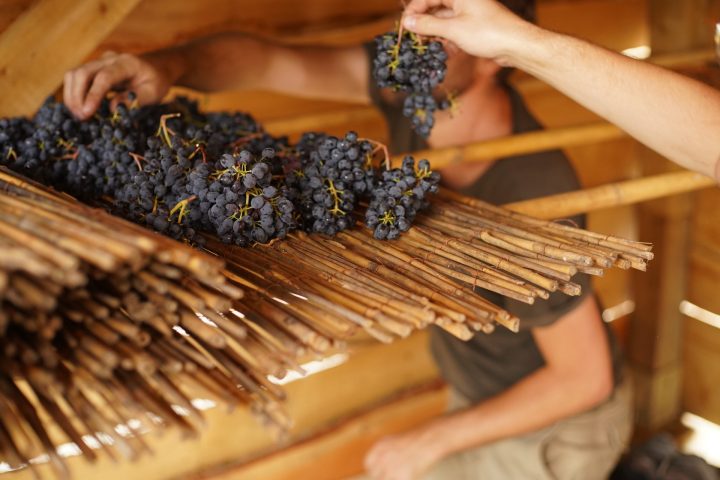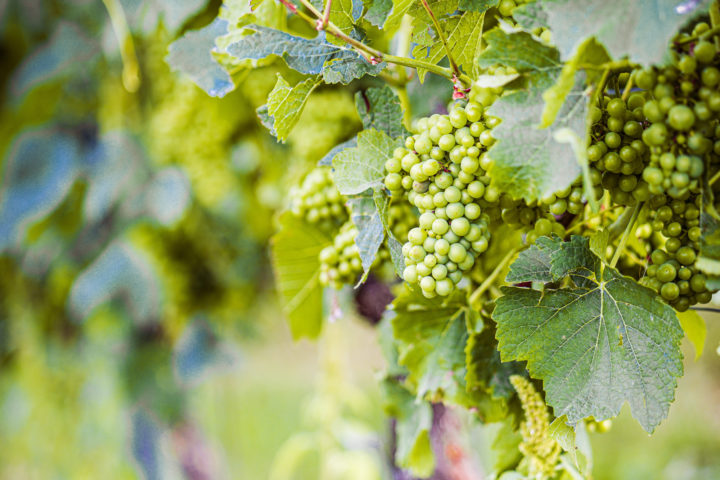Sulfites or sulfur dioxide (SO2) are an important ingredient in wine production. They serve as natural preservatives and thus extend the shelf life of the wine. However, many people are concerned about the sulfites in wine and fear that they may have a negative impact on their health. In addition, almost every wine bottle has “Contains sulfites” on the label. In this article, we reveal the unvarnished truth and explain why they are present even in sulfite-free wines.
Some people are sensitive to certain substances, which can lead to allergic reactions not unlike food poisoning or asthma. Since 2005, therefore, sulfites (above a concentration of 10 grams per liter) and other allergenic substances have been subject to mandatory labeling. With the Food Information Regulation, the labeling obligation for allergens was further tightened in 2014. Since then, significantly more allergenic substances must be labeled on product packaging.
Wines Contain Sulfites: But Why Actually?
Sulfites are salts of sulfurous acid used in winemaking for several reasons. On the one hand, they have antioxidant properties and thus prevent the reaction with oxygen, which would quickly turn the wine into vinegar and negatively affect its color and taste. Secondly, they have an antibacterial effect, killing unwanted bacteria and mold spores. Winemaking is not a sterile process, and especially during storage in wooden barrels there is an increased risk of unwanted contamination with microorganisms.
However, good winemakers try to keep the use of sulfur to a minimum. On the one hand, this requires many years of experience, but also a certain amount of manual labor. If, for example, the grapes are harvested by hand, and healthy grapes are already selected in the vineyard and gently harvested, sulfur can be dispensed with in most cases. Industrial wines, on the other hand, whose grapes are harvested with a harvester, must be stabilized with sulfites shortly after harvesting, since rotten grapes are often harvested and the skin of the fruit is damaged.
Important to know: That wine contains sulfites is unavoidable, as they are also formed naturally during fermentation by the yeast cultures. Thus, even an unsulfured wine can contain up to 30 g/l of bound sulfur. This is bound to various wine constituents such as acetaldehyde and glucose and is neither perceptible in the nose nor on the tongue. The type of wine also determines how much sulfur it contains. For example, dessert wines such as Beerenauslesen contain significantly higher concentrations than dry wines. Their residual sugar makes it absolutely necessary to use sulfite to prevent unwanted fermentation after bottling.
7 Reasons Why Sulfites Are Added to Wine
- Preservation: They slow down the natural aging process, extend shelf life and prevent secondary fermentation.
- Protection against oxidation: Protects the wine from oxidation, which can lead to changes in color and taste.
- Protection against impurities: They have an antiseptic effect and prevent the proliferation of bacteria and mold.
- Preservation of aromas: both their antiseptic and antioxidant properties contribute to the preservation of typical aromas and flavors.
- Increasing color stability: their use preserves the color of wine longer. This is due, among other things, to the fact that they bind oxygen.
- Increase clarity: they help the failure of yeasts and increase the clarity of the wine.
- Facilitating filtration: they can help trub and other unwanted particles in the wine to settle more quickly, making them easier to remove. This can facilitate the filtration.
How Many Sulfites Can Be Found in Wine?
The amount of sulfites varies depending on the type and production. In general, wines contain between 20 and 200 mg/l of sulfites. However, this amount can vary due to factors such as age, production method and type of wine. For example, red wines naturally contain more sulfites, which is why winemakers are allowed to add more to them.
The maximum amounts of sulfites allowed in food are strictly regulated. For example, dry red wines with less than 5 mg/l of residual sugar may only contain 150 mg/l. For white wines and rosé wines with the same residual sugar content, up to 200 mg/l are permitted. For comparison, dried fruits may contain up to 2000 mg/kg of sulfite.
The following list shows the maximum permissible amounts for different types of wine.
| Red Wine | White Wine, Rosé | |
|---|---|---|
| Wine, sparkling wine (under 5 g residual sugar/liter) | 150 mg/l | 200 mg/l |
| Wine, semi-sparkling wine (more than 5 g residual sugar/liter) | 200 mg/l | 250 mg/l |
| Quality wine with predicate Spätlese (over 5 g residual sugar/liter) | 300 mg/l | |
| Auslese (over 5 g residual sugar/liter) | 350 mg/l | |
| Beerenauslese, Trockenbeerenauslese, Ice wine (more than 5g residual sugar/liter) | 400 mg/l | |
| Champagne | 235 mg/l | |
| Sekt* | 185 mg/l | |
To provide an overview of the amounts of sulfites in other sulfur-containing foods, a table of the maximum amounts of sulfites in each food follows:
- Dried fruit & nuts (2000 mg/kg)
- Horseradish preparations (800 mg/kg)
- Crustaceans and cephalopods (300 mg/kg)
- dried potato products (400 mg/kg)
- Potato doughs, e.g. for dumplings (up to 100 mg/kg)
- Fruit fillings, e.g. for baked goods (100 mg/kg)
- fruit wine (200 mg/l)
- candied fruits (100 mg/kg)
- starch (50 mg/kg)
- table grapes (10 mg/kg)
- Fresh lychees (10 mg/kg)
Source: Bayerisches Landesamt für Gesundheit und Lebensmittelsicherheit
Can Sulfites be Harmful to Health?
Although sulfites are often considered harmful to health, there is no scientific evidence that they are harmful in normal amounts. They have been used in the food industry for centuries to protect food from spoilage and contamination.
However, some people are allergic to sulfites and may experience symptoms such as skin rashes, asthma attacks or even anaphylactic shock. For these people, sulfite-free wines are a good alternative.
There are also groups of people who are more sensitive to sulfites than others, such as people with asthma or certain liver diseases. These individuals should consult their physician before drinking.
Overall, sulfites in normal amounts are not dangerous for healthy people.
When are sulfites used?
Although sulfites are often considered harmful to health, there is no scientific evidence that they are harmful in normal amounts. They have been used in the food industry for centuries to protect food from spoilage and contamination.
However, some people are allergic to sulfites and may experience symptoms such as skin rashes, asthma attacks or even anaphylactic shock. For these people, sulfite-free wines are a good alternative.
There are also groups of people who are more sensitive to sulfites than others, such as people with asthma or certain liver diseases. These individuals should consult their physician before drinking wine.
Overall, sulfites in normal amounts are not dangerous for healthy people.
Myth: Sulfur in Wine Causes Headaches?
The myth that sulfites cause headaches is common, but not entirely true. It is true that some people are sensitive to sulfites and can get symptoms such as headaches, asthma attacks and skin rashes. However, this sensitivity is very rare and affects about 1% of the population.
In most cases, however, it is not the sulfites that trigger the headaches. Rather, it is the amount of alcohol consumed. Excessive alcohol consumption can lead to dehydration and increased blood pressure, which in turn can trigger headaches. Therefore, it is important to keep track of the amount of alcohol consumed. In addition, care should be taken to drink enough water to compensate for fluid loss.
Sulfite-free wines – Is there such a thing?
No, sulfites are present in natural white wines and in small amounts (up to 30 mg/L) in any wine. They are formed during alcoholic fermentation by the yeast on the natural wine lees. Although there are winemakers who do not add sulfites, these wines still contain sulfites that are naturally produced during fermentation.
Sulfites in Wine – Not a Modern Invention
Archaeological investigations have shown that the ancient Greeks already used sulfur compounds for preservation around 700 BC. Homer, Caton the Elder and Pliny the Elder also mention its use in winemaking. However, the most popular preservatives of past centuries were tree resin and pitch. On the one hand, both substances have an antiseptic effect, and on the other, tree resin influences the taste of the wine. Even today, tree resin is used to deliberately influence taste, e.g. in Greek Retzina.
Until the 15th century, wine barrels were treated with sulfur wicks, which were burned in the barrel. This created sulfur dioxide in the barrel, which both sterilized the inside of the barrel and later passed into the wine. This led time and again to official or even royal intervention to limit or even prohibit excessive sulfurization.
In 1487, Emperor Maximilian I regulated the sulfurization of wine and set the limit at 16 grams per 1000 liters, which corresponds to today’s limit for natural wines. The EU limit, however, is significantly higher at 150 mg per liter. Even today, hardly any winemaker can do without it, although there used to be wines that were vinified purely organically with tree resins, beeswax and herbs and perfectly preserved.
Wine and Sulfites: A Complex Relationship
Sulfites are an important part of winemaking and serve as natural preservatives. They ensure that the wine keeps longer and retains its typical aroma. Although some people can be sensitive to sulfites, such reactions are very rare. Sulfite-free wines are a healthy alternative, but usually have a shorter shelf life and often do not have the typical wine aroma.
It is important to know that sulfites are not only found in wine, but also in many other foods. For example, dried fruits, sour cucumbers and many other foods contain significantly more sulfites than grape juice.
In summary, sulfites are harmless in normal amounts and are not a cause for concern. However, if you want to be on the safe side, you can use sulfite-free drops, but you should keep in mind that they may have a shorter shelf life and a different aroma.









